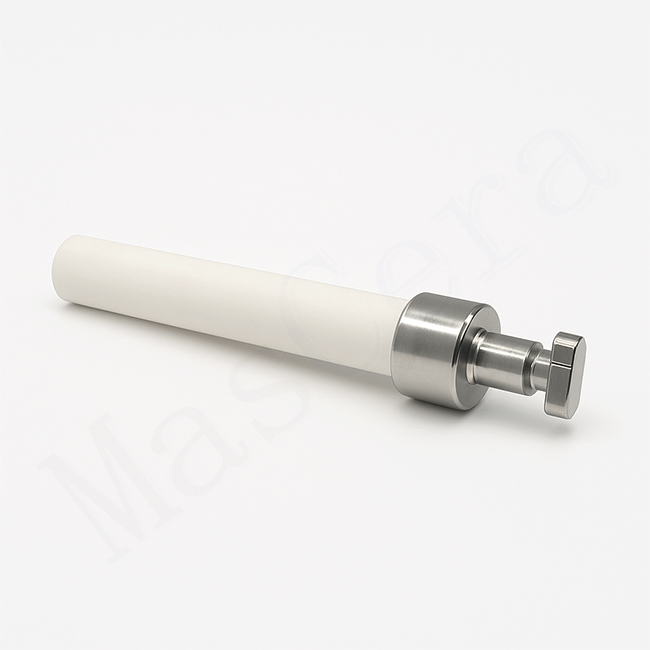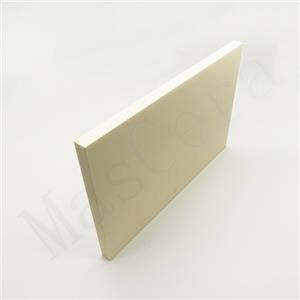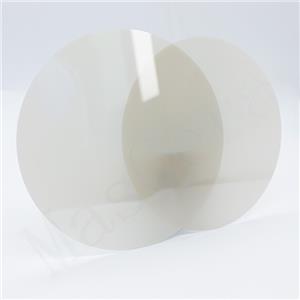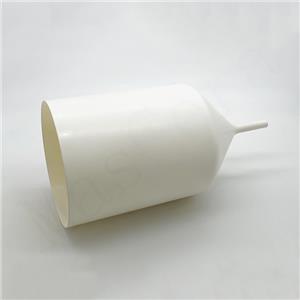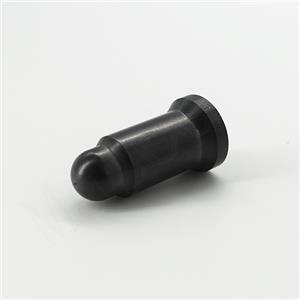Structure and Material Characteristics of Ceramic Filling Pumps
Ceramic filling pumps are piston-type metering pumps widely used in aseptic filling equipment. A typical structure includes a ceramic plunger (piston rod), a ceramic pump chamber (cylinder sleeve), rotary or check valves for liquid control, and complementary stainless-steel components (usually 316L). During operation, the ceramic plunger reciprocates inside the pump chamber, drawing and dispensing fluids through precision valves to ensure accurate liquid filling. As the pumped media directly contacts the metering components, advanced ceramics—such as alumina ceramic or zirconia ceramic—are ideal due to their excellent corrosion resistance, wear resistance, and ease of cleaning.
Compared to stainless steel, technical ceramics exhibit significantly higher hardness and chemical inertness. This allows ceramic pumps to withstand aggressive CIP (Clean-in-Place) chemicals and SIP (Steam-in-Place) sterilization without corrosion or degradation. Additionally, ceramic pumps are suitable for filling high temperature liquids and abrasive materials, making them more versatile than conventional metal pumps.
Alumina vs. Zirconia Ceramic Pumps: A Comparative Overview
Both alumina ceramic pumps and zirconia ceramic pumps are commonly used in filling systems, each offering unique advantages:
Hardness & Wear Resistance: While both ceramics offer excellent wear performance, zirconia ceramic pumps have higher density (~6.0 g/cm³ vs. alumina's 3.6–3.9 g/cm³), leading to superior abrasion resistance and longer service life under frequent CIP cycles and repetitive filling motions.
Surface Finish: Zirconia ceramics can be polished to ultra-smooth finishes (Ra ≈ 0.02μm), enabling mirror-like surfaces. In contrast, even polished alumina ceramic surfaces typically reach Ra 0.2–0.4μm. The smoother surface of zirconia helps reduce residue and cleaning liquid retention, minimizing contamination risk.
Toughness & Crack Resistance: Alumina is extremely hard but relatively brittle, with lower flexural strength and fracture toughness. Zirconia, often called “ceramic steel,” offers higher toughness and better impact resistance. This makes zirconia ceramic plungers less prone to cracking during mechanical or thermal stress, such as high-temperature steam sterilization.
Temperature & Thermal Conductivity: Alumina can withstand higher maximum temperatures (up to 1600–1700°C), whereas zirconia begins to degrade above ~1100°C. However, both materials perform excellently under standard SIP conditions (121°C). Alumina also has higher thermal conductivity (~25 W/m·K vs. zirconia’s ~2 W/m·K), resulting in more even heat distribution. Nevertheless, rapid temperature changes may cause significant thermal expansion and contraction. Zirconia’s lower conductivity may lead to thermal gradients and surface stress, although its toughness helps offset this risk.
In daily CIP/SIP operations, the difference between alumina ceramic pumps and zirconia ceramic pumps lies mainly in mechanical and thermal performance. Zirconia components are smoother, tougher, and more wear-resistant, making them ideal for harsh filling environments. Alumina components tolerate higher temperatures and exhibit faster heat transfer but require careful temperature control to avoid thermal shock. When properly handled, both ceramic types offer excellent stability and reliability through repeated sterilization and cleaning cycles, making the ceramic plunger an indispensable part of precision pharmaceutical filling systems.


